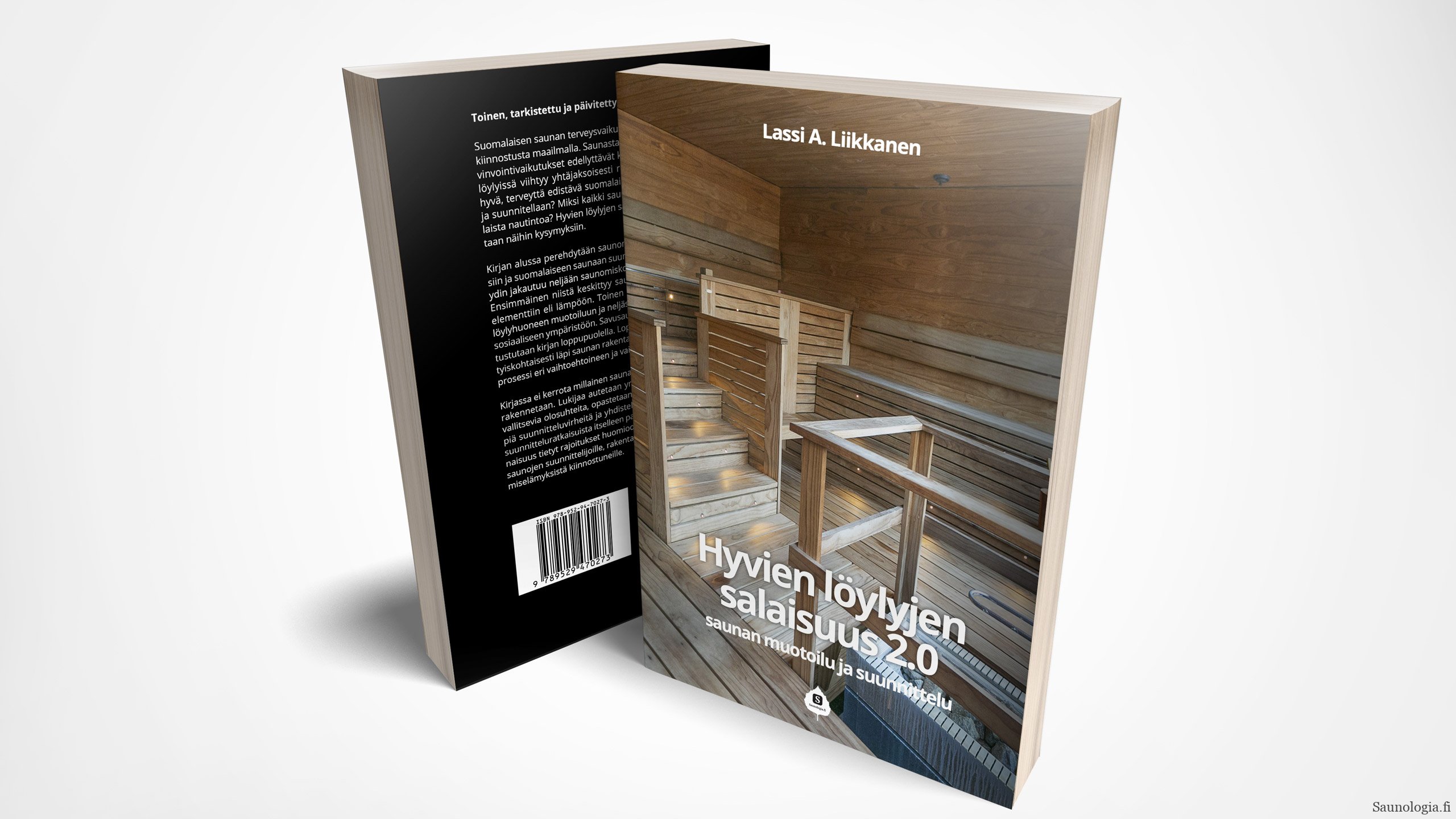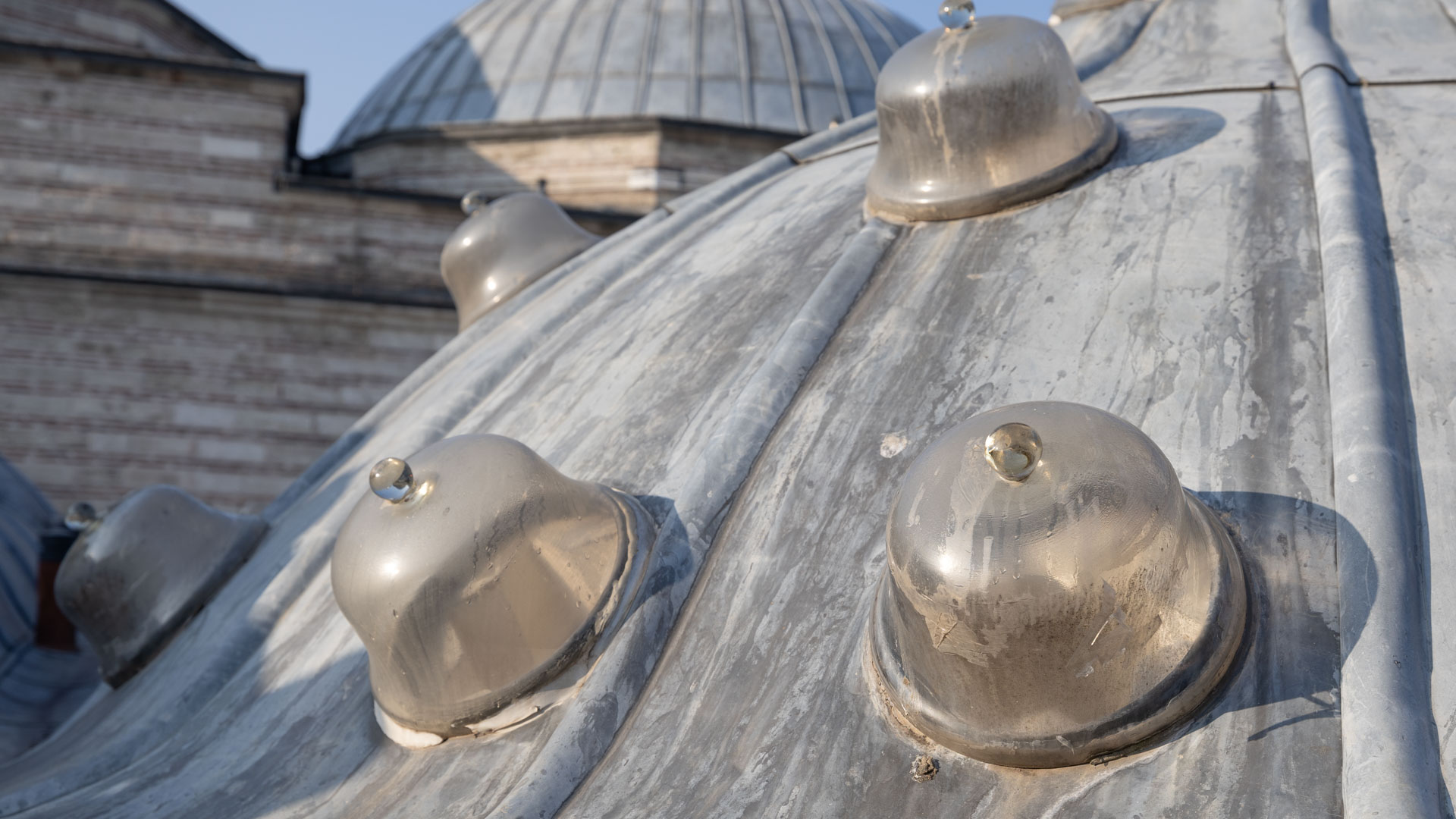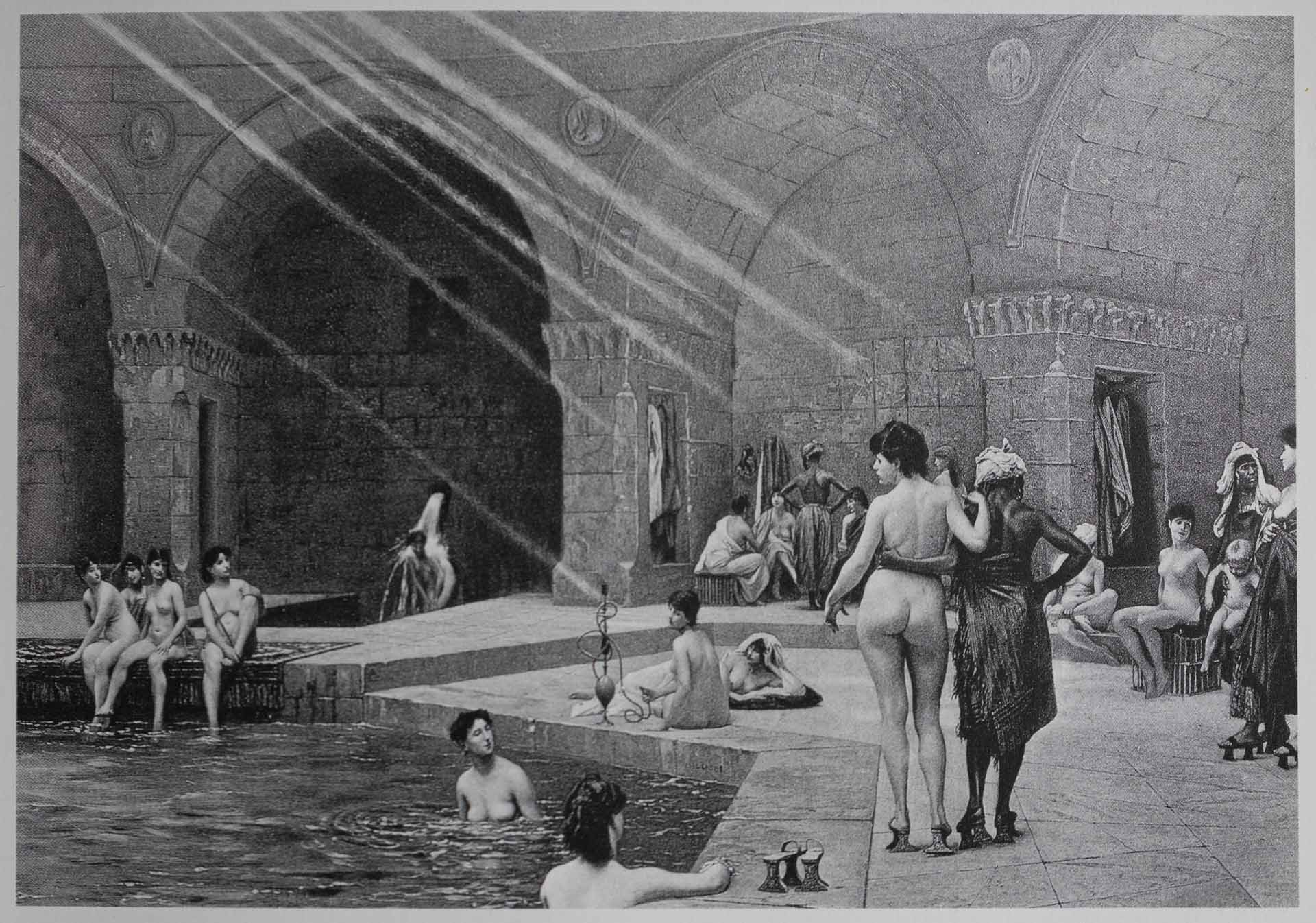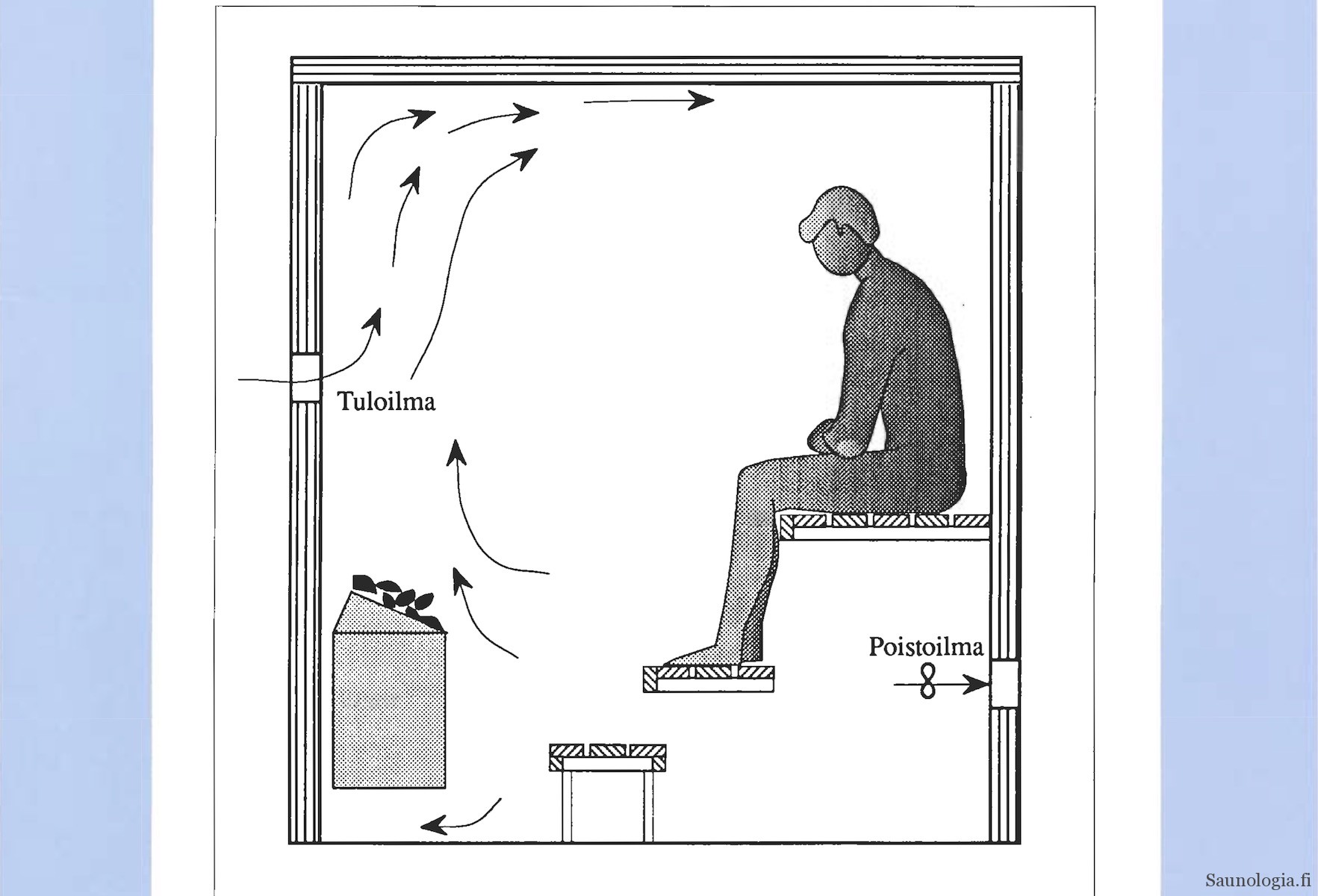Finnish Sauna Essentials Part 5 – Air quality
Sauna ventilation solutions and air quality issues
In the previous articles, I’ve covered the different ways to heat up a Finnish sauna. That’s easy deal as heat is something you can immediately perceive, but air quality, that’s a different deal. Air quality is invisible and usually becomes tangible only after few minutes of exposure but is also critical to the sauna experience. If it’s not right, sauna bathers experience something usually described as “lack of oxygen”. That’s not quite correct, but a good metaphor for the feeling of being short of breath without any obvious reason.
Air quality is the most mysterious of the sauna experience elements. There’s a good reason to believe that air quality is affected by multiple factors. These include air temperature, humidity, carbon dioxide level, oxygen level, and possibly few others. These others may include ions, gases evaporating from sauna stones or treated wooden surfaces, and those resulting from bacteria living on unclean surfaces and materials. The bacteria usually result in a bad smell immediately recognizable upon entry – a definitive sign of a bad sauna!
What to aim for in air quality?
In the absence of a good understanding of what objectively speaking makes up a desirable air quality in a sauna, the common, pragmatic solution is to make sure the sauna air is kept fresh by a continuous circulation of air. The same principle that is applied to all other living quarters.
For half a century, the Finnish standards have called for exchanging the air of a room 3 to 6 times an hour. The current official requirements are set in relation to the number of people using a space, but the old rule still gives a good idea on the volume of ventilation needed. Air must be exchanged frequently.
The conventional wisdom is that if you follow this recommendation in a sauna, you will experience fresh and pleasant air quality. However, achieving this is not that simple. If you only look at the volume of air that has to move through the inlets and outlets measured in kg or liters of air per second, you can create catastrophic sauna climate. You must achieve good mixing of fresh and stale air to guarantee good air quality and enjoyable sauna experience.
Ventilation requirements and solutions for sauna
The sauna ventilation is by nature different from other types of ventilation systems. This is because of the unusual conditions of the sauna room: it is very hot and can get humid as well. This makes the air behave differently. And then there is löyly.
Steam (löyly) has its own nature and one principle thing is that we don’t want to let it get away too quickly. This means that we must avoid placing any major outlets in the top part of the sauna room, otherwise we’ll be losing some or all of the precious löyly.
Natural and mechanical ventilation are both useful solutions for sauna use. Natural ventilation has been used for ages and is well suitable for sauna cabins and dedicated sauna facilities. Mechanical ventilation is also broadly used in Finland, particularly when the sauna is located inside an apartment building, at gym, or elsewhere among quarters unrelated to sauna.
An important design consideration is what type of stove your sauna is equipped with. Electric, single-fired wood burning stove, or continuously fired wood stove each have their special requirements. The ventilation for the regular wood-burning stove is probably the easiest as it creates a source of ”mechanical ventilation” in its self. The other stove types do not have this advantage.
Natural ventilation
Gravity and the laws of physics can effortlessly solve many ventilation issues. Particularly with outdoor sauna cabins equipped with continuously burning wooden stove, natural ventilation is quite simple. This is because a wood-fired stove will in effect act as a “mechanical outlet” in its own. It consumes a huge amount of air (appr. 10 m3 for each 1 kg of dry firewood) in the burning process. This air is sucked out of the room in which the stove resides (or the fire si fed from). This alone will satisfy the volume of ventilation.
However, the air mixing condition is more difficult to satisfy. It is probably the biggest problem with natural ventilation when used with wood-burning stoves. With electric stoves, the natural ventilation is even more difficult and I would generally advise against using it. It can be done, but that requires more individual design solutions than I can provide here.
Simple stack ventilation with an outlet in the ceiling works, but as already said, it is not energy efficient and wastes löyly so I am not a huge fan of it.
Looking at known good and simple natural ventilation solutions for sauna cabins, the following are tested and tried:
- Semi-open floor: wood planks have 10 mm gaps between them so fresh air is received from underneath the floor
- Inlets/outlets low in the walls, very close to floor. Similar effect as with the floor but also possible when the floor is solid. Preferable several ones facing different directions that can be closed
- Underground buried air duct, inlet with metal casing raising above and next to the stove
Generally, the fresh air should be retrieved from the outside rather than from the room next to the sauna room. The mixing works best if you can pull in the air relatively high in the sauna room, just above the stove’s top level. The trick is in preventing this inlet from turning into an outlet…
Mechanical ventilation
Going into the domain of HVAC (heating, ventilation, air conditioning), mechanical ventilation refers to systems that circulate air inside buildings through sometimes complicated ducts, heat exchangers, dampers, and fans. Fresh air supply is drawn from the outside of the building and blown inside. The circulation is completed with the help of exhaust that sucks out the “used” air.
The same system is commonly utilized in Finnish modern detached houses. To succeed, the sauna supply and extract air vents must be placed smartly to support the special requirements of Finnish sauna practice.
Luckily, here we can rely on some research conducted in 1990’s at the Finnish technical research institute VTT (reference: Äikäs & Holmberg, 1992. VTT Report 1431). They ran a series of experiments with a tiny sauna cabin to figure out the optimal placing for supply and return vents.
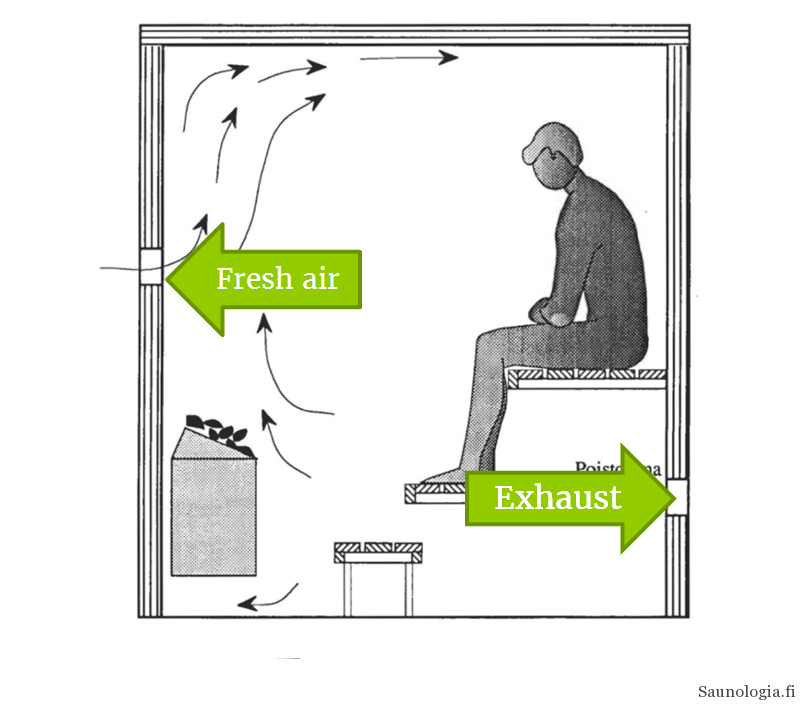
The recommended configuration for fresh and exhaust air ducts is quite straightforward. Fresh air should flow in above the stove, preferably not in the ceiling but closer to stove (e.g. 50 cm, or 2’). Return vent should be located below the level of the “feet bench”. Additionally the sauna should be equipped with an exhaust vent in the ceiling that can be opened after sauna bathing to remove hot and damp air from the top of the room. This should be closed before heating up and using the sauna again. See the illustration below:
This should be quite simple to implement. The exhaust part may require a special solution. In Finland, a telescopic, aluminum “sauna duct” is often used behind the sauna paneling to extend the duct running above the ceiling to the level needed closer to the floor.
Mechanical sauna ventilation gets more tricky to implement if your sauna room is too big to operate with a single vent (or so small that it tends to get drafty). Also if your mechanically ventilated sauna is running a wood-burning stove, things get complicated. Typical mechanical ventilation cannot provide an adequate air supply for the wood burning stove and a parallel, natural supply must be arranged one way or the other.
Finally, I recommend that your mechanical ventilation should have an adjustable volume. This can be tricky with small houses that commonly have a single machine running the whole ventilation and air conditioning system. But if you can accommodate this wish, you should definitely do it. Adjustable ventilation provides flexibility to tune the system when the sauna and the setting that feels best.
Summary
Air quality is crucial to a good sauna experience. This article provided an overview of how that can be achieved with different ventilation solutions. There are still many details and corner cases uncovered. Luckily an HVAC professional should be able to work out your sauna plan as long as they are aware of the special requirements of the Finnish sauna.
As noted in the very beginning, cleanliness of the sauna room is also required to maintain the feeling of fresh air. If there are sources for bad smells, these will ruin attempts save the air with good ventilation.
Design it well and keep it clean – enjoy the fresh sauna air!
Need more information?
Saunologia Finnish Sauna consultation services in your service! We provide personal consultation in plain English! It is our pleasure to help you with projects of all size remotely and on site anywhere you need in the world.
If you want to guarantee a great Finnish sauna experience from your design, contact us first, prevent costly design mistakes and ensure blissful sauna for public or private use!
